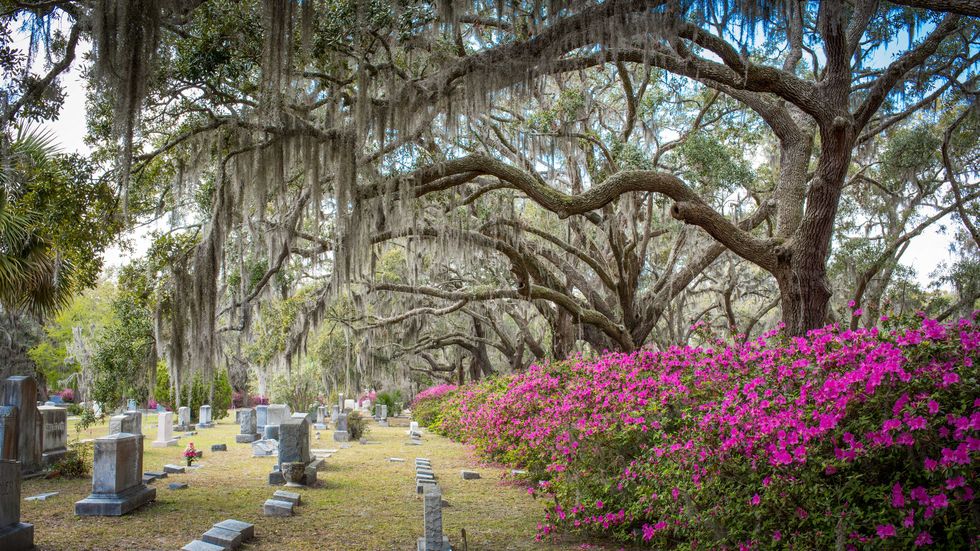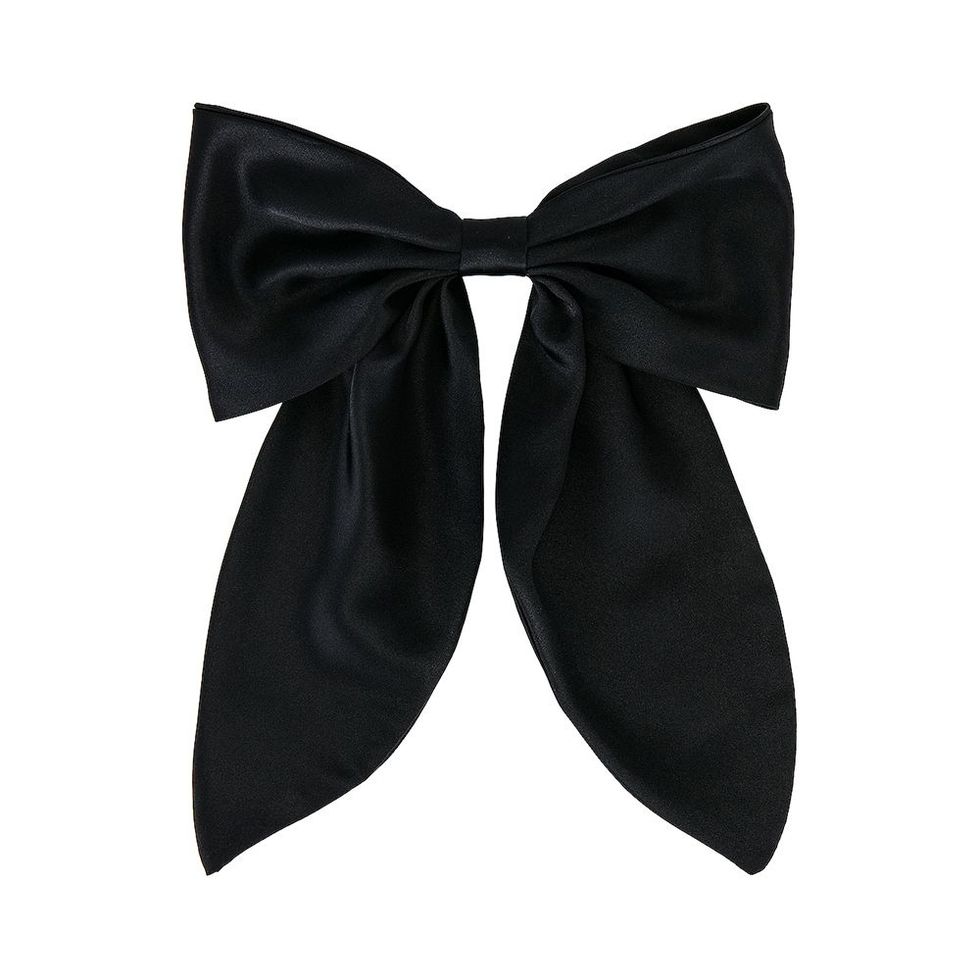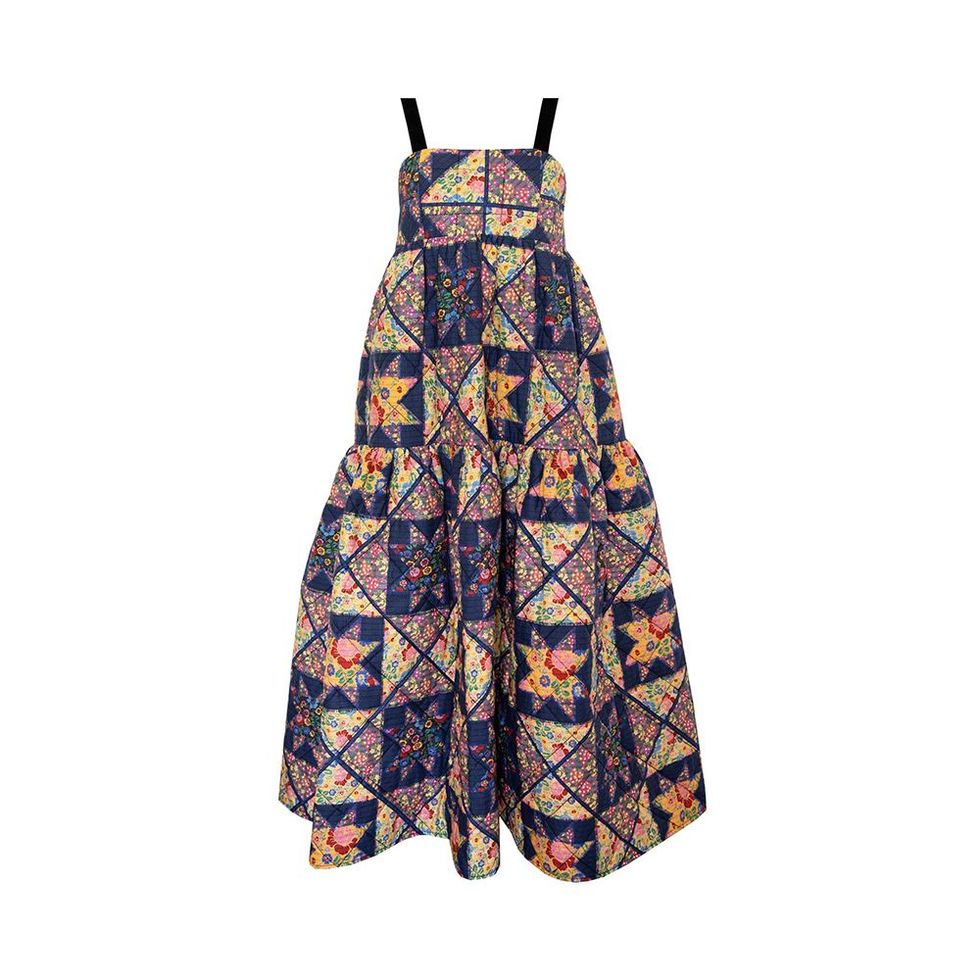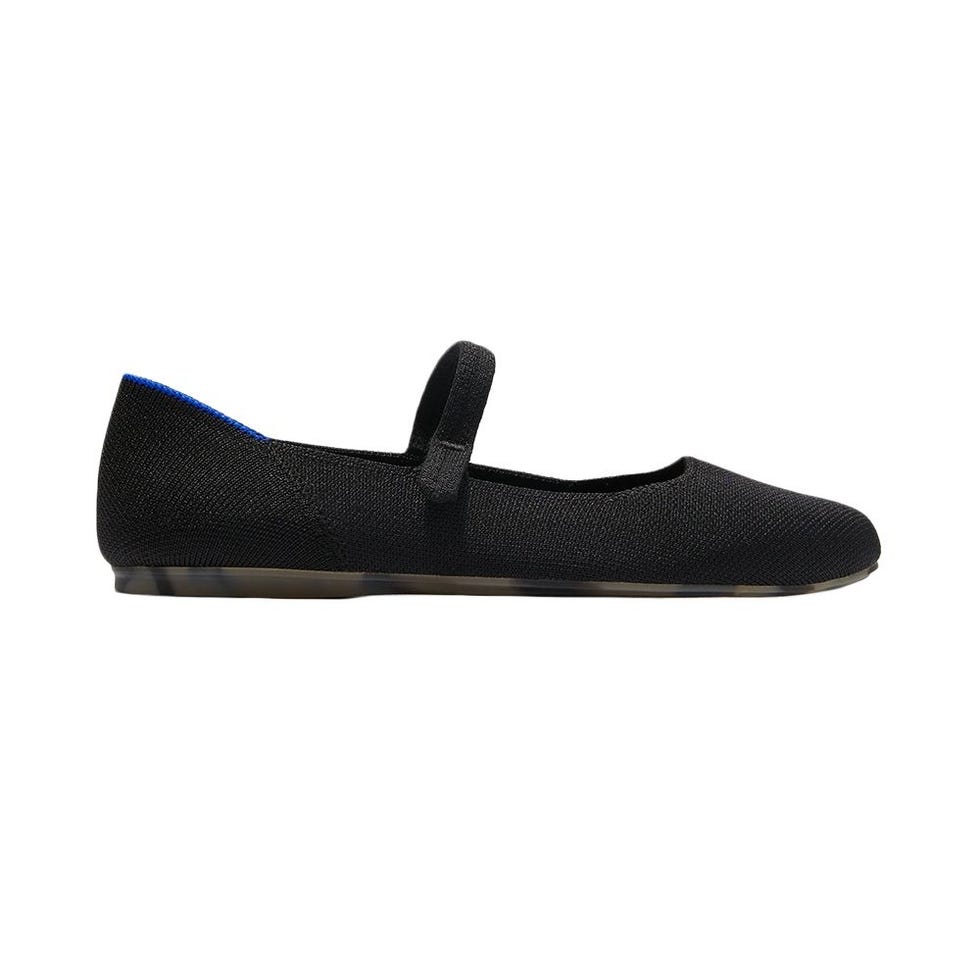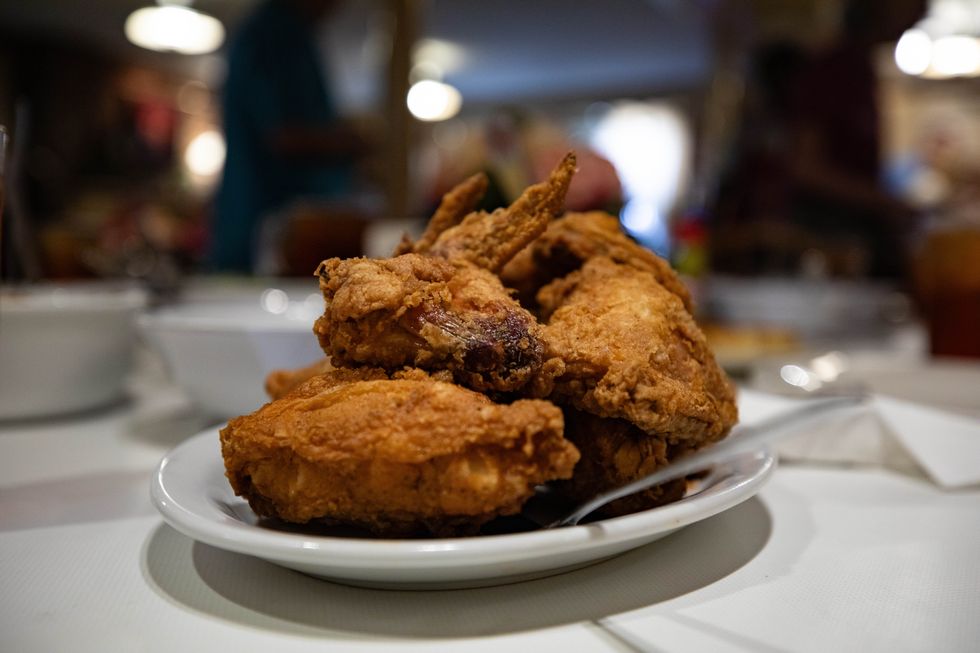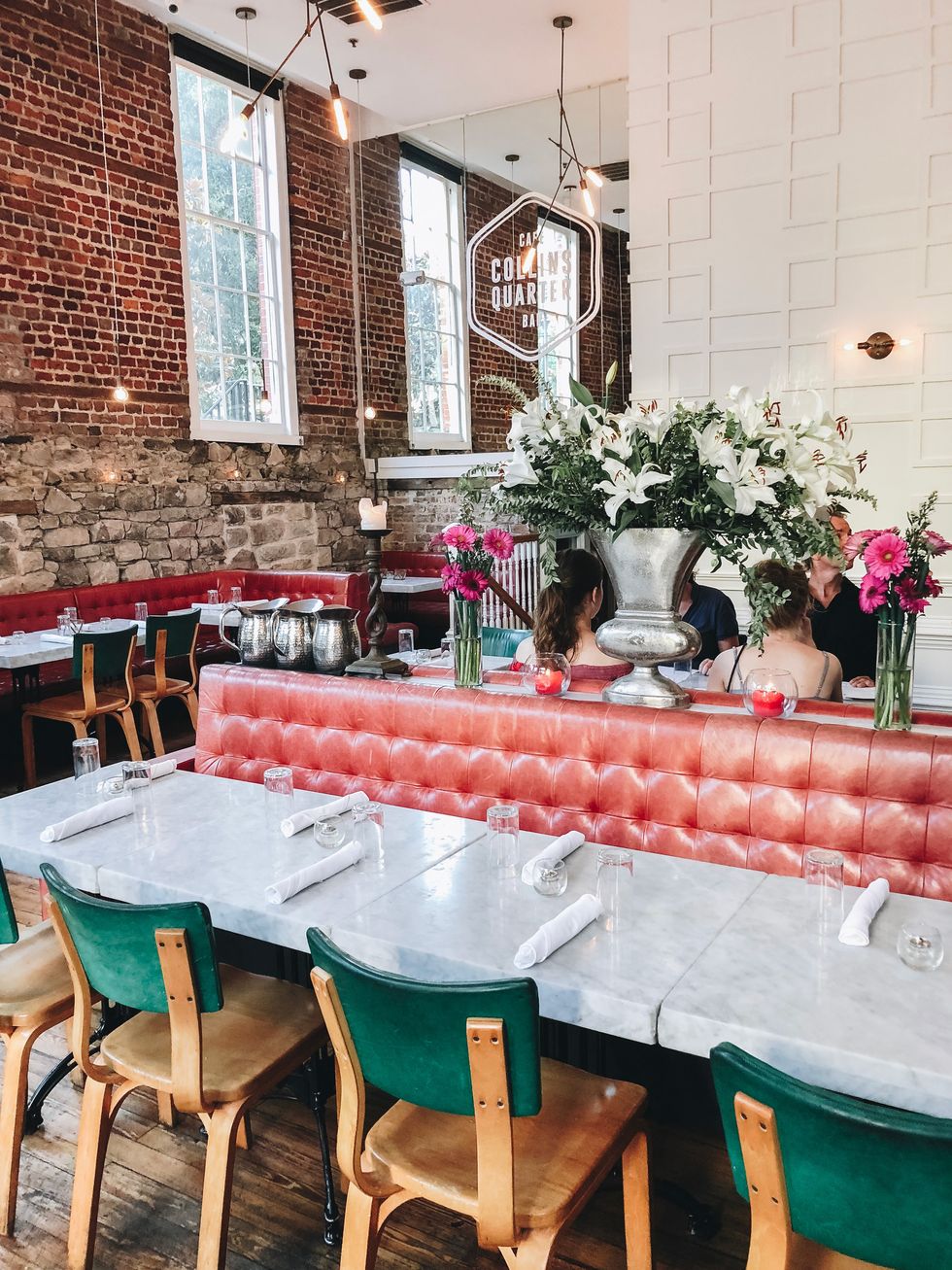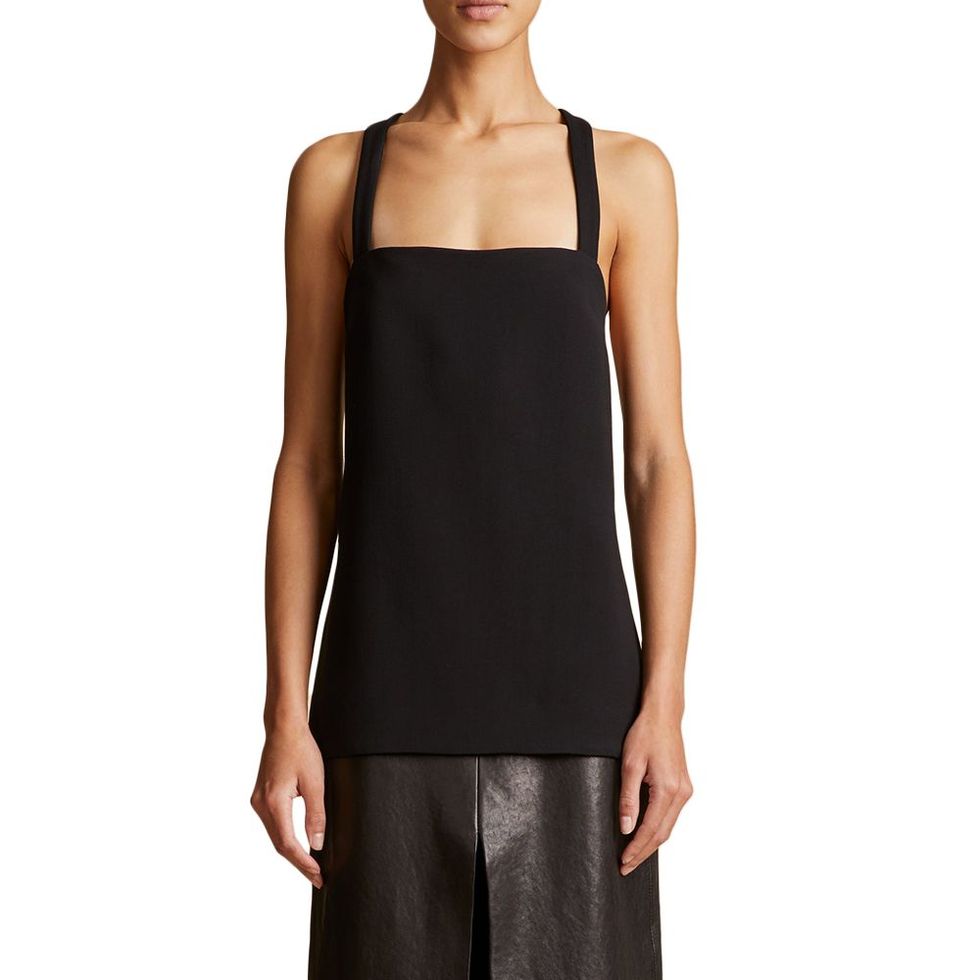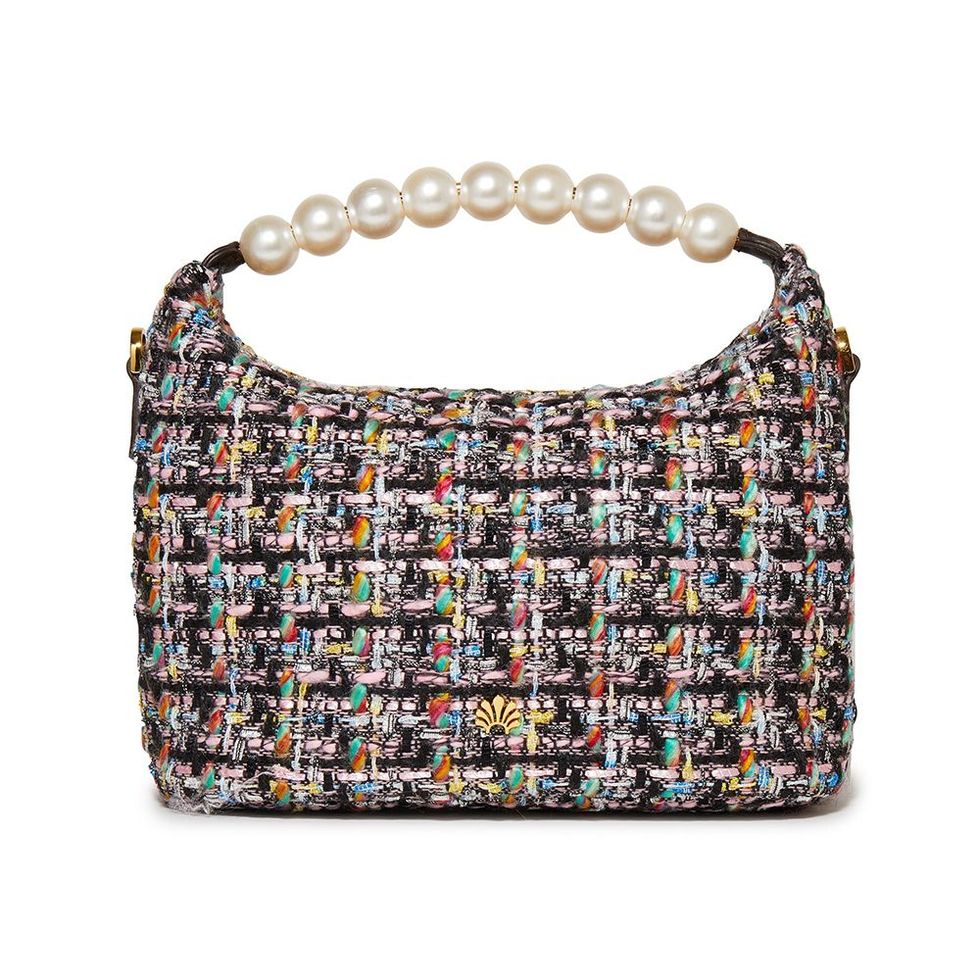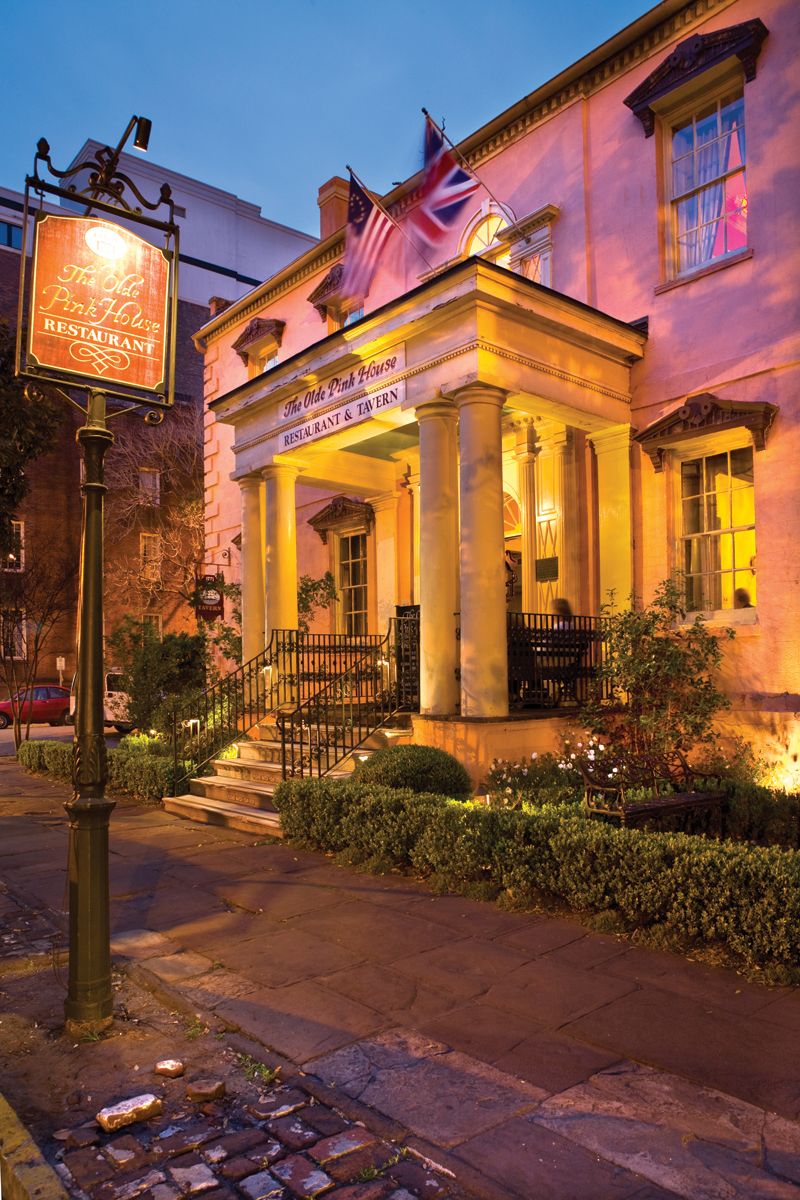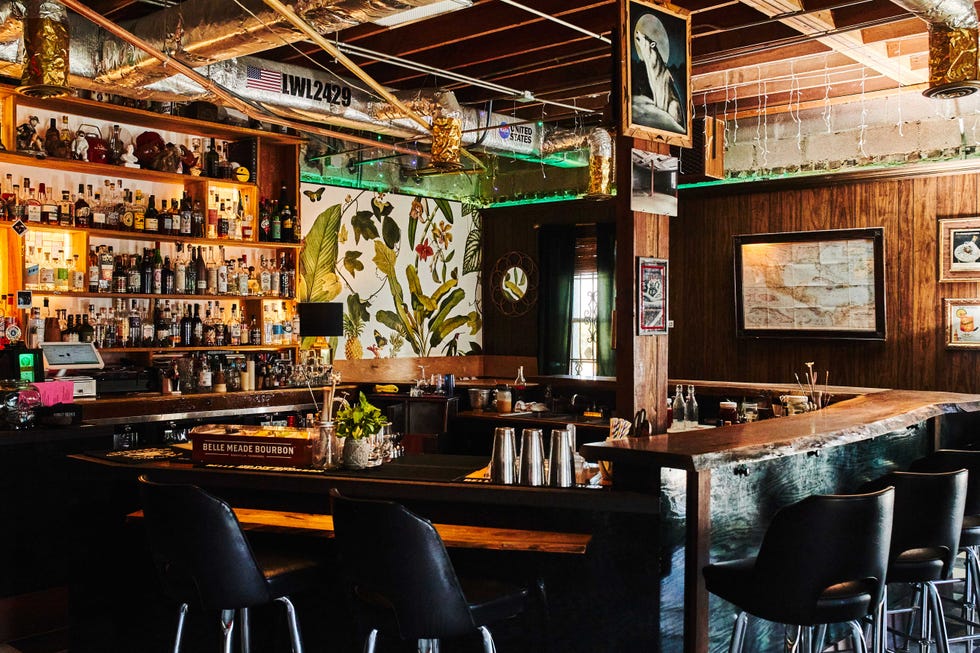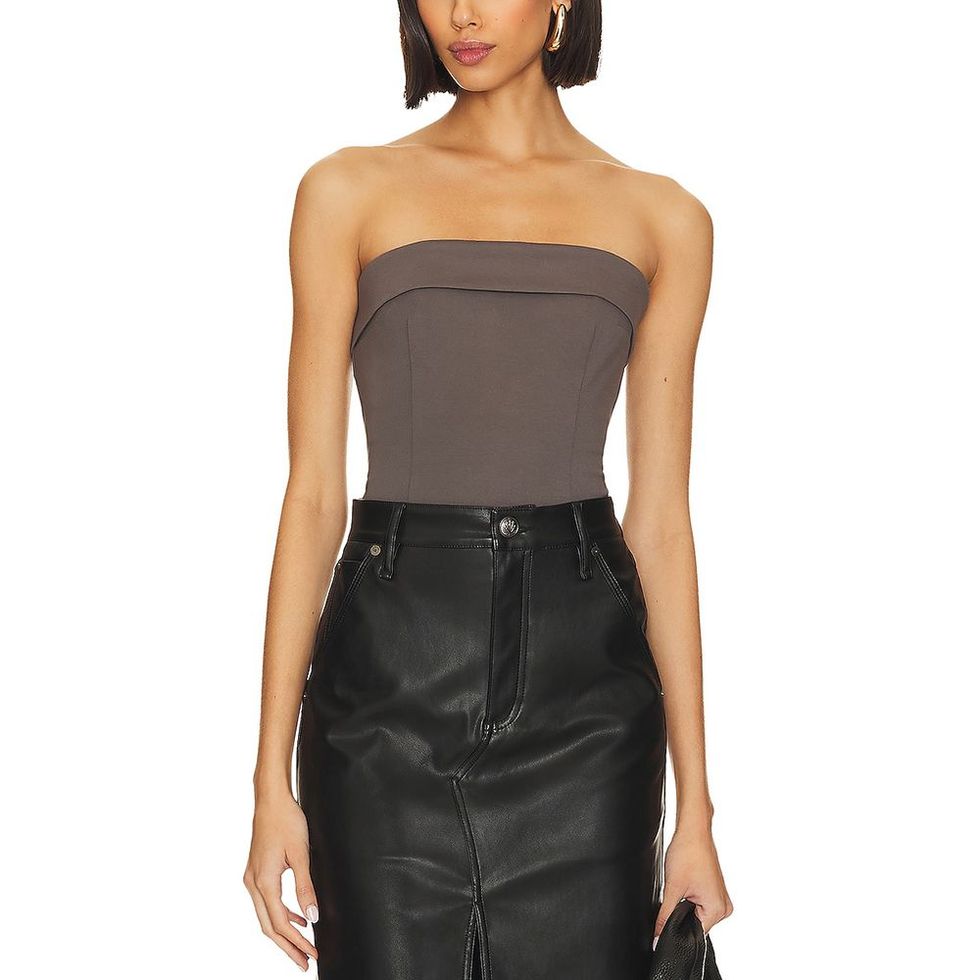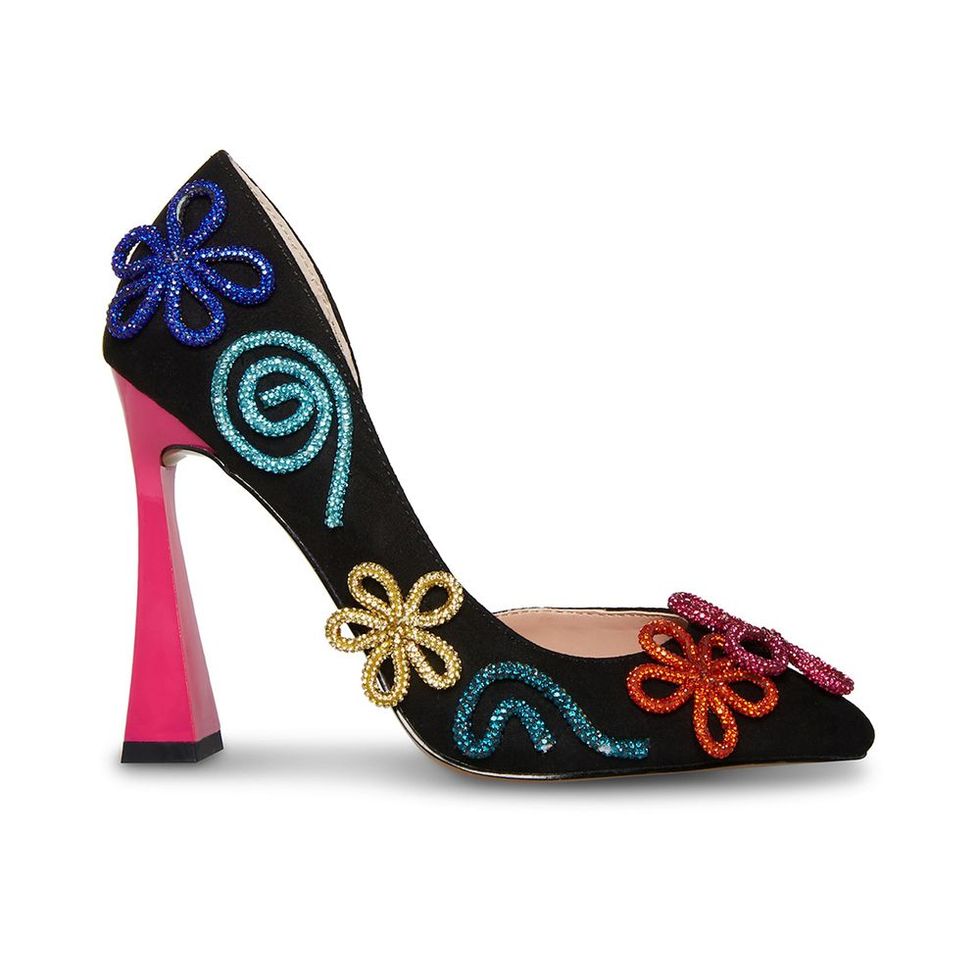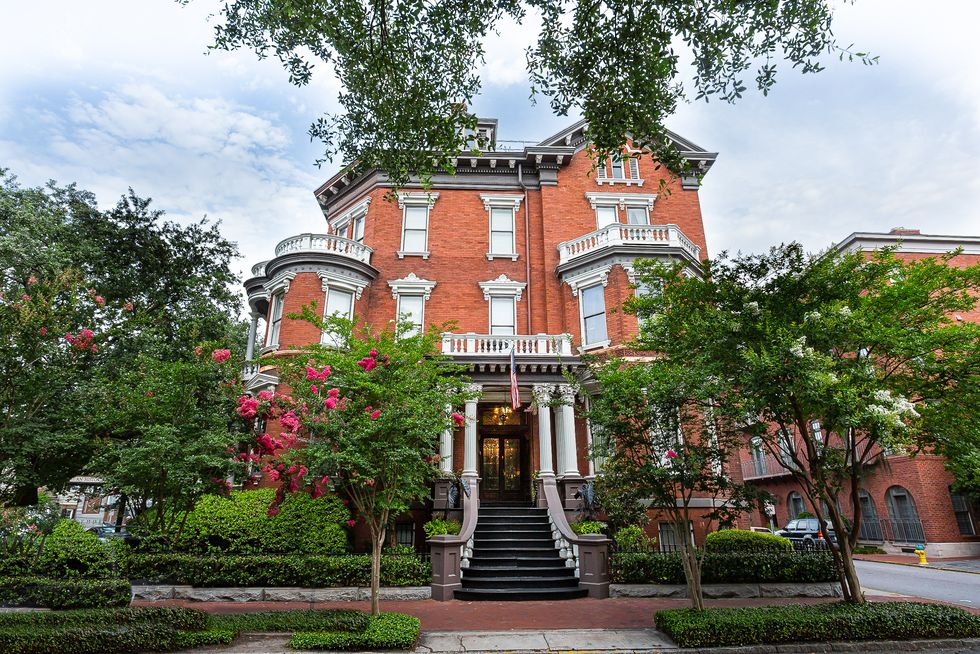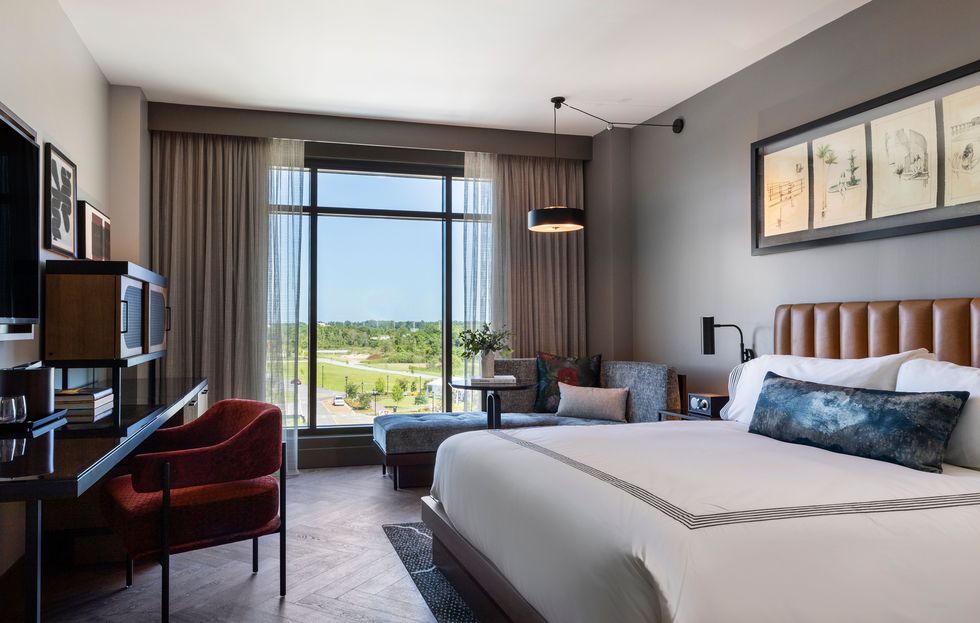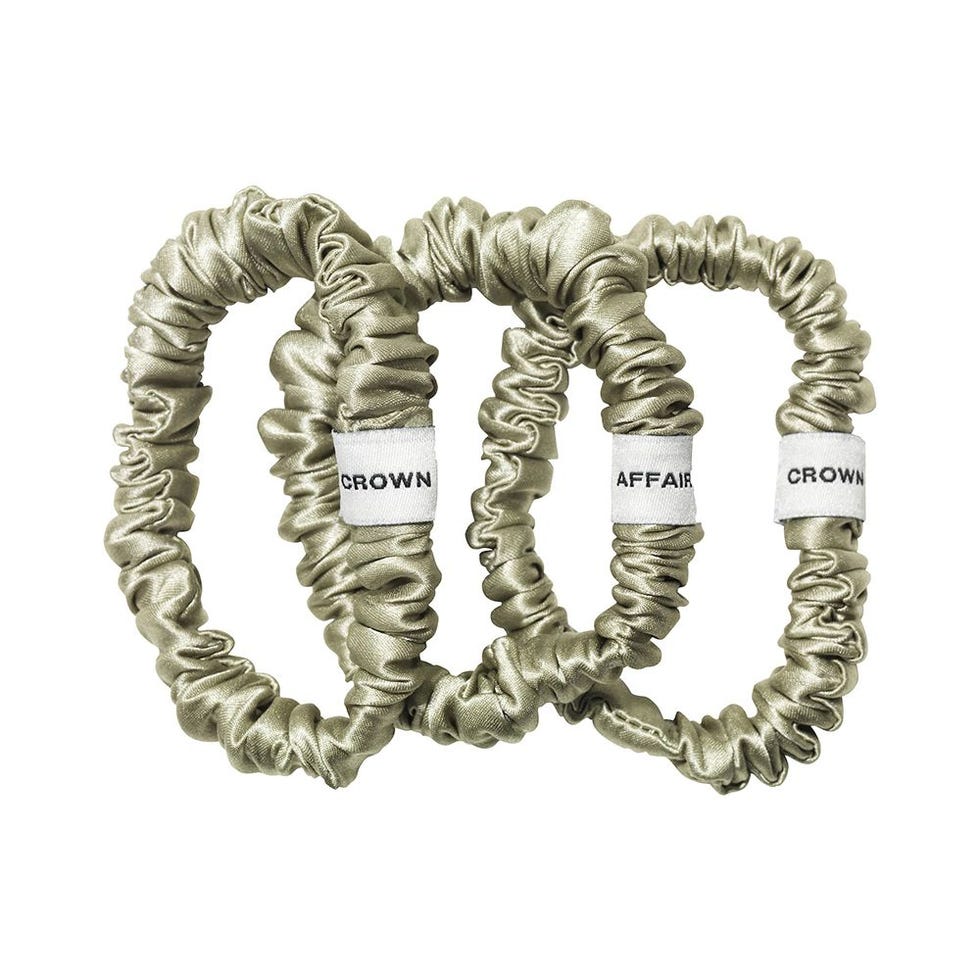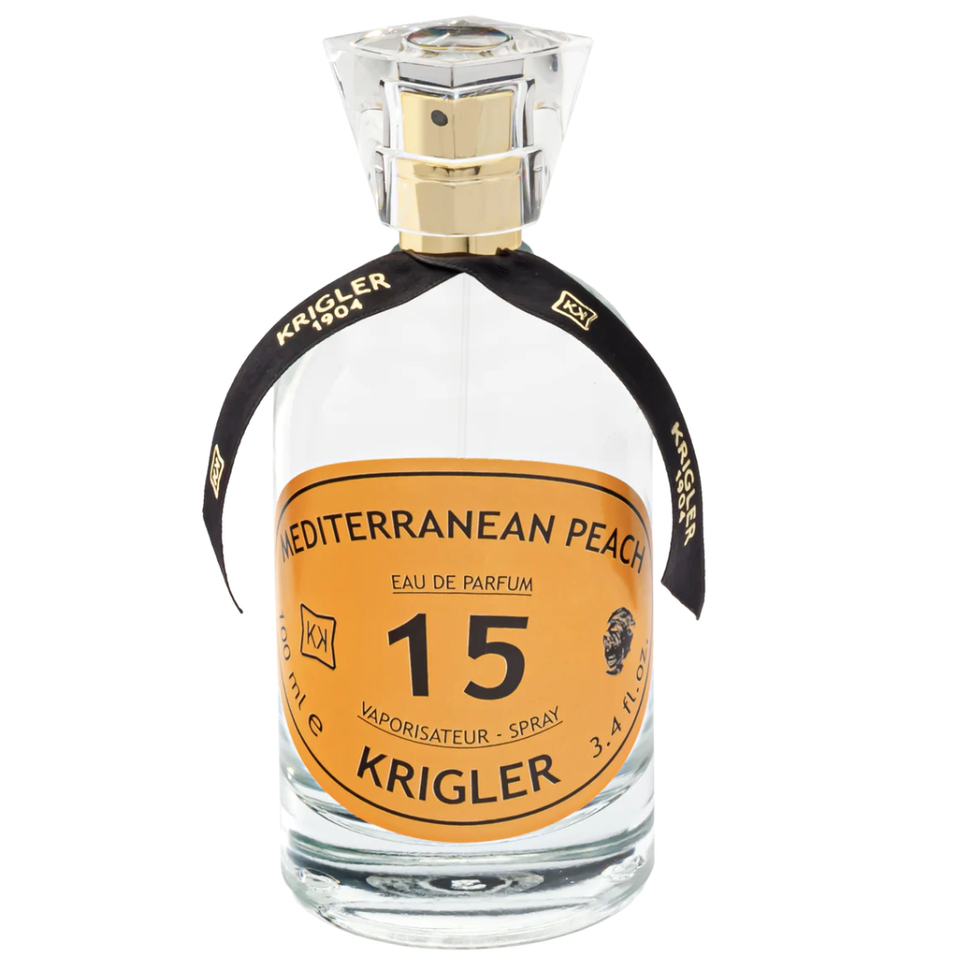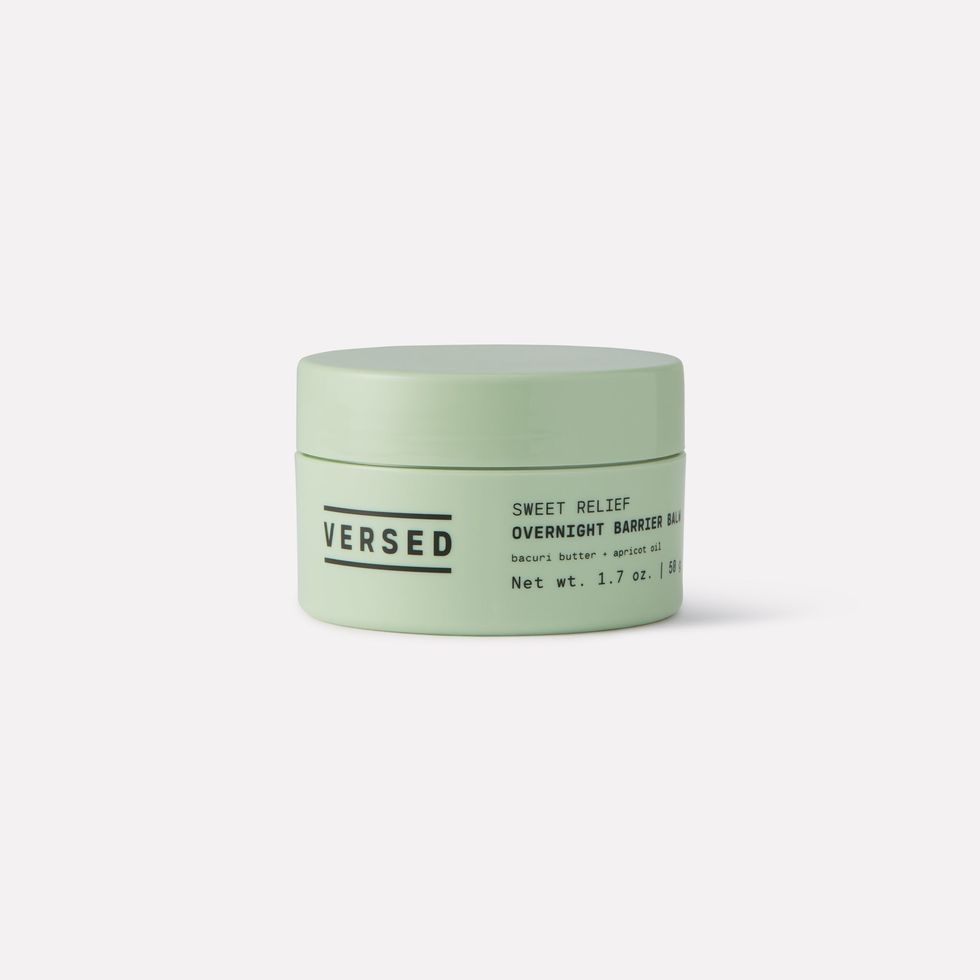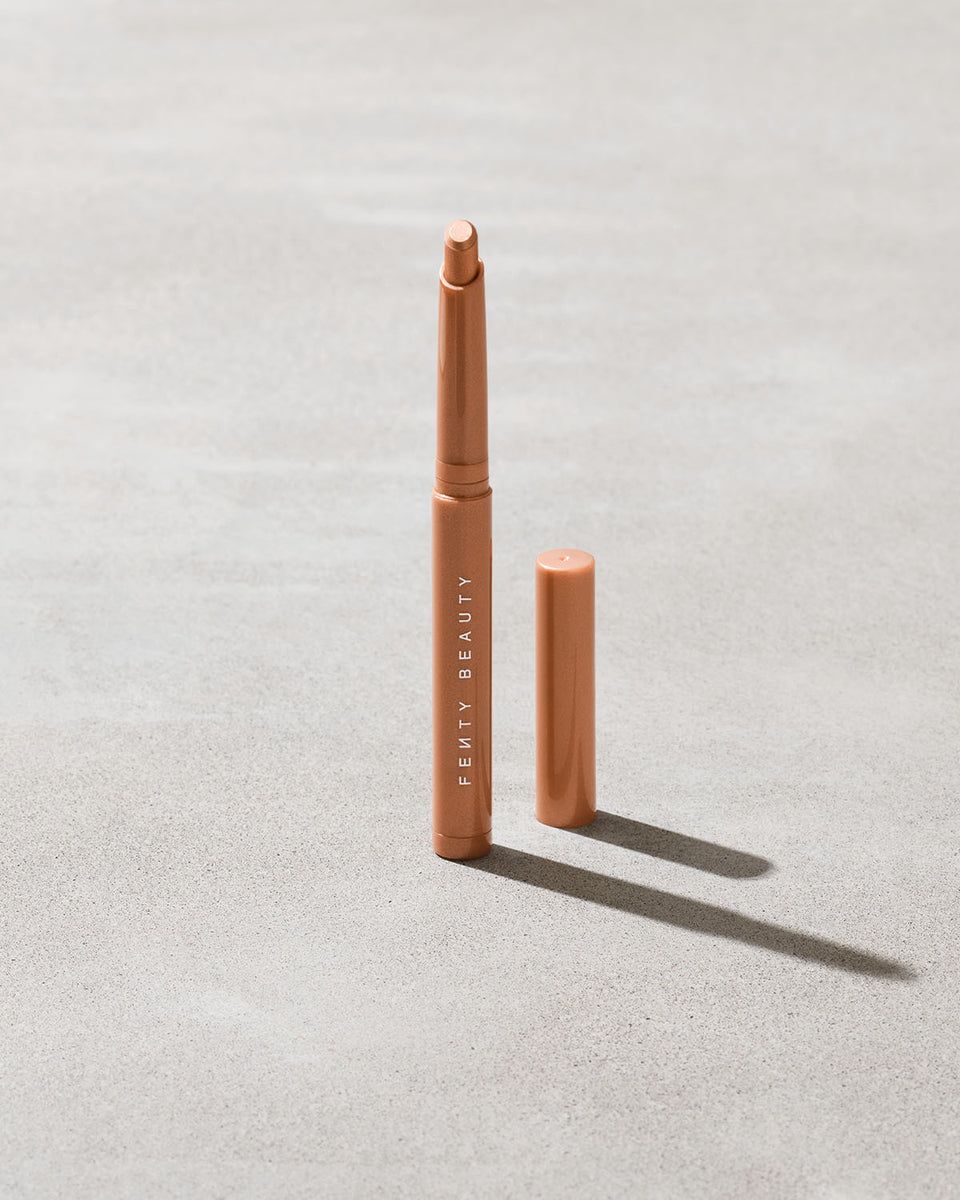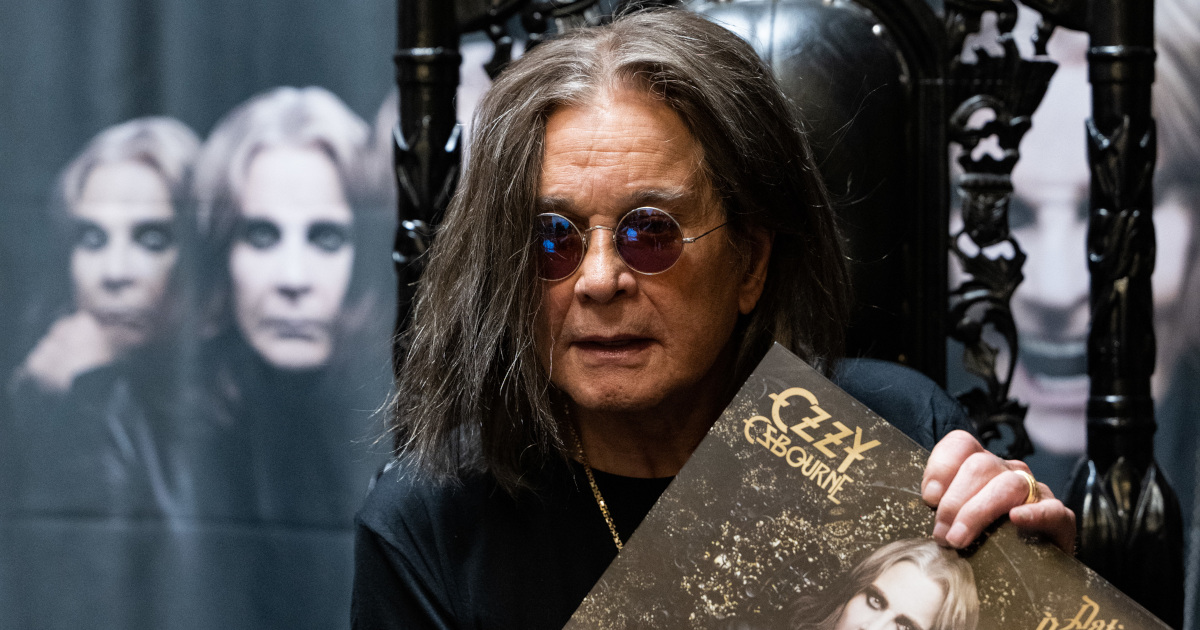ELLE Escapes: Savannah
There’s no bad time to visit Savannah, Georgia, but spooky season may be the very best. I spent a long weekend in the so-called Hostess City (for its Southern hospitality), and between the drapey curtains of Spanish moss hanging from the tall oaks in Forsyth Park, the tombs in the famed Bonaventure Cemetery, and supposedly real haunted houses and other sites sprinkled throughout, I can’t imagine a better place to ring in the holiday. (The city was home to the eerie true-crime book and movie, Midnight in the Garden of Good and Evil, for a reason!)
But Savannah isn’t all ghosts and goblins. The historic downtown is gorgeous and lush, owing to its 22 grassy squares and stunning mansions. You can spend hours wandering the area (cocktail to-go in hand, thanks to generous open container laws), stopping at museums, shops, and restaurants along the way. End the day with happy hour at a rooftop bar; I recommend The Lost Square and Myrtle & Rose in the recently restored Plant Riverside District.
That covers day one; now here’s a rundown on what else to see, eat, drink, and where to stay in Savannah.
What to See
Riverboat Cruise
The Georgia Queen is an icon: a huge restored 1800s red and white paddlewheel boat that tours the Savannah River daily. Climb aboard the 38,000-square-foot vessel that includes three ballrooms and head up to the top deck to enjoy the view. You can tour at brunch, lunch, dinner, or my personal favorite: sunset.
The Sorrel–Weed House
This 16,000-square-foot mansion—one of the largest houses in the city—was one of the first two homes in Georgia to be made a state landmark in 1954. The Sorrel–Weed House is a prime example of Greek Revival and Regency architecture and has been welcoming visitors on its history tours since 1940. It also has a reputation for being one of the most haunted houses in Savannah and hosts ghosts tours each night. Do I believe in ghosts? No. But was I both thoroughly freaked out and entertained on the tour? Absolutely.
Bonaventure Cemetery
If you have a thing for Spanish moss, Bonaventure Cemetery is your mecca. This sprawling 100-plus-acre cemetery is famous for its unique sculptures and architecture, but also for its lore and the moss-covered, tree-lined boulevards that dissect it. The site was first purchased as a private cemetery in 1846 and became public when the city of Savannah purchased it in 1907. The most-visited grave is a statue of Little Gracie Watson, a six-year-old who died of pneumonia in 1889.
Where to Eat
The Grey
Bus stations aren’t necessarily where you might think of eating your next great meal. But if you’re lucky enough to snag a table at The Grey, a restaurant set in a 1938 Greyhound Bus Terminal that has been carefully restored, its gorgeous original art deco details intact, I can promise it will be by far the best meal you’ll ever have in a former transit hub. That’s thanks to Mashama Bailey, a two-time James Beard Award-winning chef (and an alumna of NYC’s Prune) who brings a personal touch to the port city southern recipes she learned from her grandmother and mother, who taught her how to cook. The menu relies on local seasonal ingredients and changes frequently, sometimes even during the course of the dinner service, so I won’t bother naming specific dishes, but I do recommend putting yourself in Mashama’s gifted hands and indulging in the five-course “chef’s suggestion” prix fixe.
Mrs. Wilkes
In 1943, Sema Wilkes opened a boarding house in downtown Savannah, housing guests on the top floor and serving family-style meals downstairs. That same tradition carries on today at Mrs. Wilkes Dining Room, where every day hungry visitors pack in elbow to elbow at large communal tables to enjoy all the Southern classics: fried chicken, cornbread, okra gumbo, sweet potato soufflé, black-eyed peas, macaroni and cheese, and other delicious offerings.
Collins Quarter
There are two Collins Quarter locations in Savannah—one downtown and one in Forsyth Park—and you can’t go wrong in either spot. They are most known for their brunch menu, which features inventive dishes like bananas foster french toast, “bubble & squeak”—a potato pancake on a bed of creamed corn and topped with portobello mushroom, tomato purée, and a poached egg, and “swine time beni,” a fresh take on eggs benedict served on brioche with pulled pork and bacon.
Where to Drink
The Olde Pink House
If you don’t have a reservation for dinner at The Olde Pink House, which as the name suggests, is a restaurant housed in a stunning colonial bubblegum pink mansion, I suggest hitting the bar downstairs. It serves the same menu, has a darker mood, befitting of the city and the mansion’s history, and often features live music. The best seat in the house is the private table in the wine cellar.
Congress Street Up
Congress Street Up is a speakeasy located within the American Prohibition Museum—the only museum in the U.S. devoted to the Prohibition era. You can visit the bar as part of your museum tour during the day when the speakeasy is open to museum guests only, or on Wednesday through Saturday nights when the bar opens to all after 6:30 P.M. All of the cocktails, wines, and beers served have origins tracing back to Prohibition, and the costumed bartenders are happy to offer up history lessons while you sip. They also offer cocktail making classes if you want to learn to mix your own.
Lone Wolf Lounge
The owners of The Lone Wolf Lounge have called it “the Caribbean meets Wisconsin” and it turns out, that’s a good combination. The lounge is a cross between a dive bar and a tiki bar; think: dark wood, leather seats, tropical wallpaper, and general Polynesia-meets-basement vibes. Drink names like “Never Rub Another Man’s Rhubarb” and “Treating Objects Like Women” are a nice touch. Tasting them is ever better.
Where to Stay
The Alida
Checking into The Alida feels more like entering a cool art gallery than it does a hotel. Every detail of the design in this converted riverfront warehouse has been tastefully done: the exposed brick, the original artworks, the mid-century furniture, the bold textiles, the glass and steel elements throughout. The rooms are light and modern and offer either pool or city views, but the real star here are the amenities: not only is there a very photogenic pool, there are bikes you can borrow to cruise around town, complimentary snack and beverage nooks on every floor, and cookies and cocktails in the lobby. Everything I ate at The Rhett, be it brunch or dinner, was delicious, and the hotel’s bars offer live music most days and DJ pool parties on the weekends.
The Kehoe House
Seeing Savannah’s historic mansions from the outside is one thing, staying in one is a whole other level. The Kehoe House, located on Columbia Square, was built in 1892 by William Kehoe, an Irish immigrant who built a successful iron foundry (you can thank him for the home’s cast iron exterior stairway, window treatments, columns, fences, and gates). His heirs sold the house in the 1930s and it had various uses in the years that followed, before being opened as a 13-room bed and breakfast in the 1990s.
Thompson Savannah
A newer arrival on the edge of the Savannah River, the Thompson Savannah opened in the summer of 2021 and features a large pool deck with private cabanas and Bar Julian, the city’s tallest rooftop bar. Also be sure to stop by Fleeting for seasonal fare and Stevedore Bakery for an impressive selection of sweet and savory treats.
Beauty Picks

Deputy Editor
Kayla Webley Adler is the Deputy Editor of ELLE magazine. She writes and edits cover stories, profiles, and narrative features on politics, culture, crime, and social trends. Previously, she worked as the Features Director at Marie Claire magazine and as a Staff Writer at TIME magazine.



